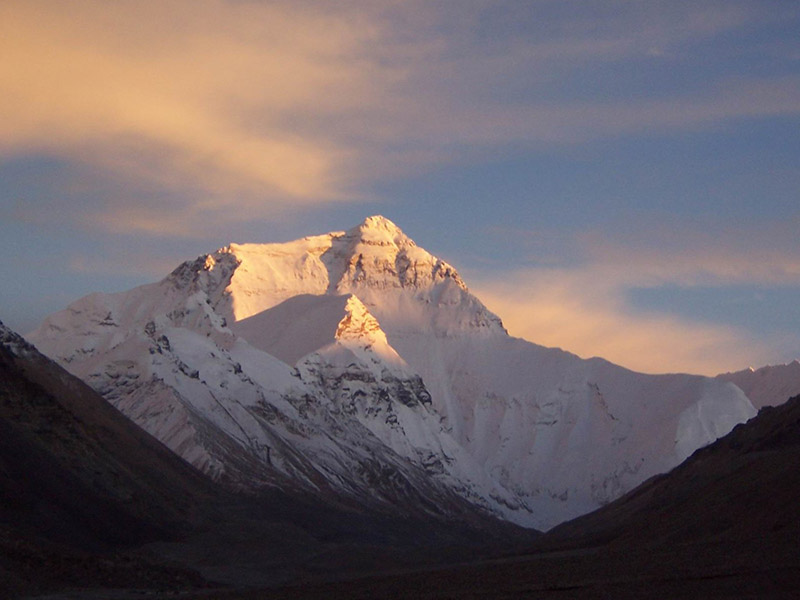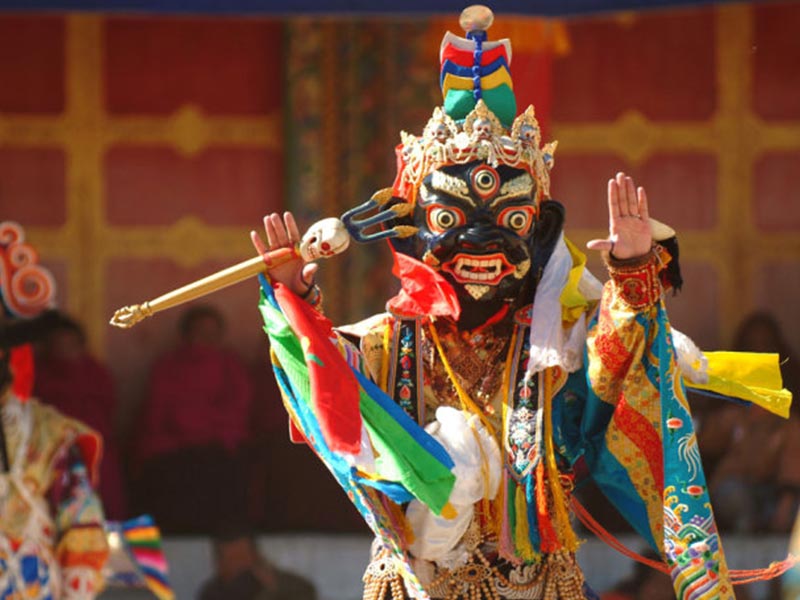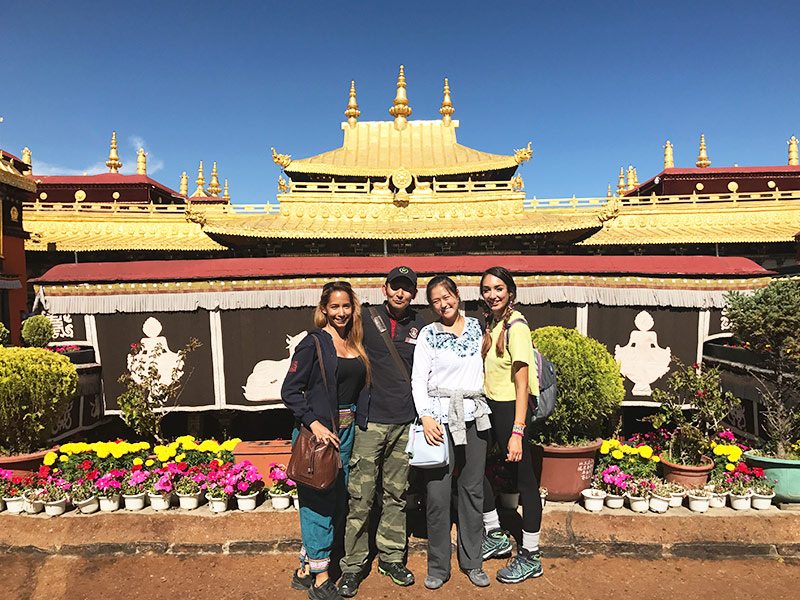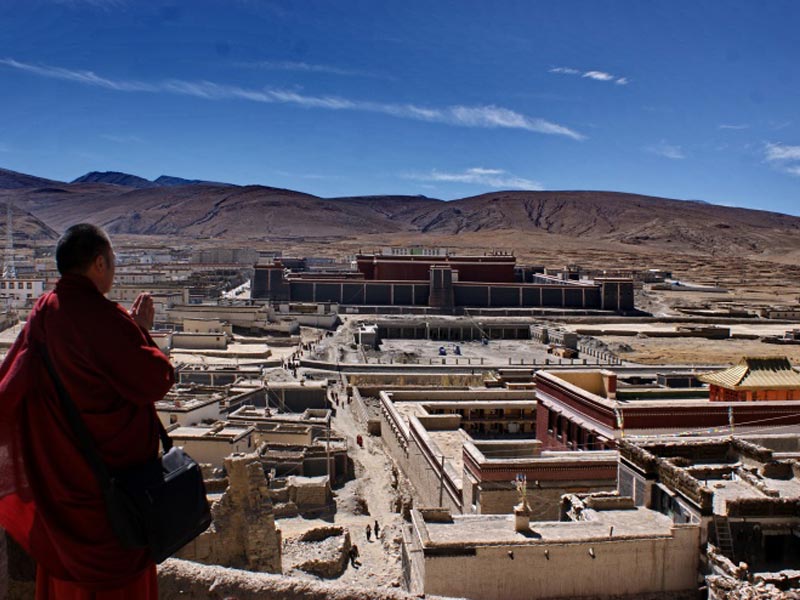Although Tibet has been open to the world for dozens of years, many Tibet mysteries still remain unsolved. Is a abominable snowman of the Himalayas real? Why does the red snow only happen in Himalaya? In this post, we’ll introduce the top 10 Tibet’s unsolved mysteries for you, including Tibetan yeti stories, red snow in Himalaya, rainbow body phenomenon, Mount Everest flag cloud, Zhang Zhung culture, King Gesar storyteller, Guge Kingdom, gterma mystery, Shambhala and shaman of Tibet.
Top1. Abominable Snowman of Tibet
As one of the world’s greatest unsolved mysteries, abominable snowman of the Himalayas (Tibetan Yeti) is always a hot topic among adventurers and explorers to tour Tibet. As early as 1784,Tibetan abominable snowman has been mentioned in the written records for the first time. It’s reported that several people in the Himalayan region have witnessed Tibetan Yeti walking around and robbing local men for marriage. In recent years, some expedition groups have gone to eastern Tibet for further investigation, but whether abominable snowman really exists is still a mystery.
Top2. Red Snow in Himalayas
The surface of the Himalayas is often decorated with blood red spots. Seeing from a long distance, you would think it as red snow. Those red spots are made up of various algae, such as Chlamydomonas nivalis, Chlorococcum infusionum, Ankistrodesmus and so on. Widely distributed in the permanent ice and snow, the plateau algae have a strong cold resistance, making them alive even at -36℃. And due to red pigment in their bodies, they seem to be blood-like.
Top3. Rainbow Body Phenomenon in Tibet
Rainbow body is a mysterious phenomenon in Tibetan monasteries. It’s believed that only the senior Lamas who have made greatest achievements would pass away into a rainbow and enter the boundless palace at their parinirvana.
Top4. Mount Everest Flag Cloud
When it’s sunny, you can see a milky banner-shaped cloud floating on the top of mount Everest. That is called as mount Everest flag cloud, forming by convective clouds. Based on its location and height, we can deduce the wind force of Mt. Everest summit. If the flag cloud flutters upwards, the wind is much lighter, and vice versa. Thus, it gains the reputation as the world’s highest vane.
Top5. Zhang Zhung Kingdom
Zhangzhung, meaning a land of roc, was the earliest civilization of Qinghai-Tibet Plateau.According to archaeological studies and historic records, Zhang Zhung had risen on the Tibetan plateau in the 10th century BC, and built relationships with Tang Dynasty earlier than Tubo Kingdom. In the 6th – 7th century, Zhangzhung mainly lived on the animal husbandry and agriculture began to take shape. Zhangzhung Dynasty not only had its own script and language but also became the birthplace of the Bon religion, which has profoundly affected Tubo Kingdom and even the entire Tibetan culture. At its glory, Zhangzhung Kingdom covered a vast territory, including Tibetan Plateau, parts of Qinghai and Sichuan, etc. It also extended to Kashimir and Ladakh. At the 8th century, it was completely conquered by Tubo Dynasty. Since then, Zhangzhung Kingdom suddenly disappeared. Its culture and historical relic still remain to be proven.
Top6. Storyteller of King Gesar
King Gesar is a heroic epic created by the Tibetans from a collection of ancient legends, myths, verses, proverbs and various other folk cultures of Tibet. Originating via folk oral traditions, history of King Gesar was passed down from generation to generation orally in a combination of song and narration for over 1,000 years. Meanwhile, kinds of legends about King Gesar storyteller also came out. Among numerous narrators, the ones who are able to tell more than one version of King Gesar epic boast themselves as divine artists. That’s to say, the story of King Gesar they told is bestowed by Gods. Some illiterate Tibetan teenagers, especially in Kham Area can unexpectedly narrate for King Gesar of ling with millions of words after illness or a dream. Till now, no one can explain this mystery.
Top7. Guge Kingdom
In the 9th century, when Lang Dharma was assassinated, the Tubo Kingdom fell apart as civil wars surged. Jide Nyimagon, the great-grandson of Lang Dharma, led his followers to Ngari and set up the Guge Kingdom. The region had a glorious past. At its peak, the regime covered not only the entire Ngari, but also extended to Kashmir and today’s Pakistan. There are many opinions on how the Guge Kingdom disappeared. A widely acclaimed view says that in 1635, soldiers from the Ladakh Regime finally conquered the Guge Palace and ravaged the place into ruins. But massacre and plunder caused by war were not enough to destroy Guge civilization. How could it disappear so suddenly like the Mayan civilization? If you went to tour Kailash today, you still can catch a striking scene that only dozens of households live around the vast kingdom of Guge in western Tibet. But they are not Guge’s descendants. How could this be? No one knows so far.
Top8. Terma Tradition in Tibetan Buddhism
Fucang, called as Terma in Tibetan language, means a valuable thing buried in hiding is dug up again in the future. When Tibetan Buddhism encountered disasters, the precious classics would be protected in hidings till the danger has passed. There are three kinds of Terma in Tibetan Buddhism, namely, Buddhism scripture, sacred items and knowledge. The most miraculous thing is the knowledge hidden in people’s consciousness. The story goes that when the classic or the scripture cannot be passed down in catastrophe, it was granted by Gods to be buried in human’s minds so as to avoid being lost. Till time allows, people endowed with Buddhist mantras would recite out or write them down. Some of them would be illiterate farmers and herdsmen. This is the well-known gterma mystery.
Top9. Shambhala in Tibetan Buddhism
Shambhala, also translated as Shangri-la, is the mythological world of Tibetan Buddhism as well as the birthplace of Kalachakra Tantra. People are always skeptical about Shambhala. And Tibetan Buddhists regard it as a fictional paradise. Shambhala has been recorded in details: surrounded by snow mountains, Shambhala is home to hundreds of thousands of flowers, herbs, lakes, lions, elephants, horses, royal palaces, holy places, etc. However, the doubt about whether Shambhala really existed is still unsolved.
Top10. Shaman of Tibet
Tracing back to Tibetan primitive religion, Tibetan ancestors held that deities existed everywhere, like in the heaven, under the earth, in the waters, and all the living beings in the world are subject to those deities. With the development of human society, people had a fantasy of controlling the objective things and natural phenomena. Thus, worship and shamans emerged. However, as time went by, we just know little about shaman, let alone Tibetan shaman music and shamanic meditation. Maybe in a remote place, the original Tibetan shaman drum and mask still remain as before.
It is just the beginning of your Tibetan expedition when you get to Lhasa. There are still many other fascinating miracles and mysteries waiting for you to explore. I can’t list them all out here, so please feel free to contact us for further consulting.
.jpg)






















0 Comment ON "Top 10 Unsolved Mysteries in Tibet Tour"